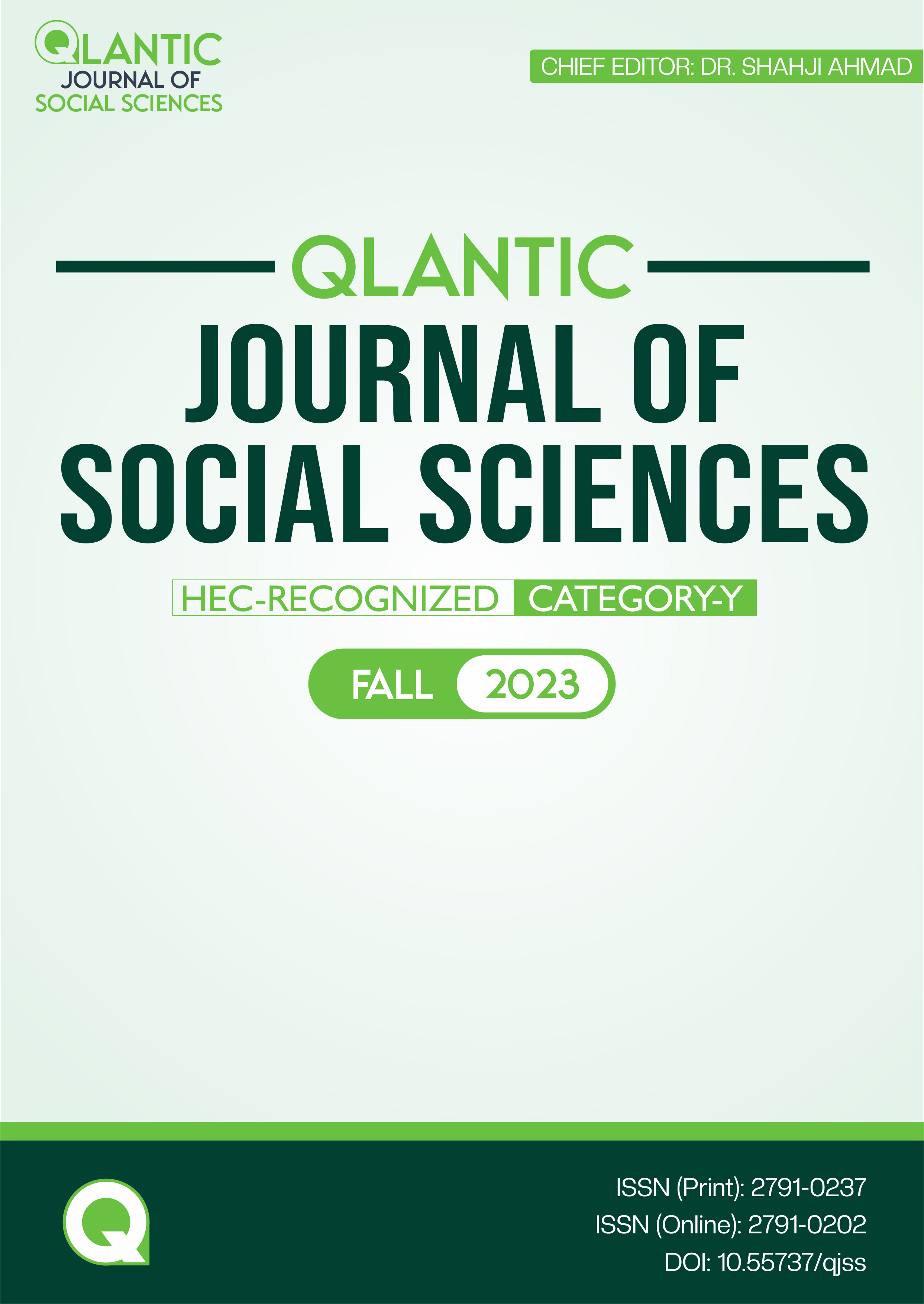Nuclear and Joint Family System: Youth Perspective in Quetta, Balochistan
DOI:
https://doi.org/10.55737/qjss.699721149Keywords:
Nuclear Family, Joint Family, Youth, Perspective, Social ExperiencesAbstract
Every human being is a part of either a joint family or a nuclear family. Both types of families have multiple positive and negative consequences on individuals' lives, as previous literature represented various advantages and disadvantages of joint and nuclear families. According to Khatoon, A. (2008), in a joint family, the children's self-decision is discouraged due to the dominancy of the family head in all their choices. The aim of the present study was to analyze the actual experiences and perceptions of youth regarding joint and nuclear families in Quetta City. Even though the existence of joint and nuclear families has a strong influence on individuals' lives, there is still no scholarly work on them. Henceforth, the study selected a qualitative approach to analyze the experiences of youth (B.S. students) from the University of Balochistan. One Focus Group Discussion(FGDs) and nine interviews were conducted on the basis of data saturation through convenient sampling. Data collection tools included interview guide schedules in order to obtain rich pieces of information for targeted phenomena. Further data was analyzed through a thematic analysis tool. However, the findings of the present study portrayed the experiences and perceptions of respondents belonging to both family systems.
References
Akubue, F. (2008). Sociology of Education. . Great A.P Express Publishers Ltd.
Alam, A. (2008). Factors and Consequences of nuclearization of Family at Hayatabad Phase-11, Peshawar. Sarhad Journal of Agriculture., 24(3), 55-59.
Ali, M. M. (2018). The Effect of Nuclear and Joint Family System on the Moral Development of Students at Elementary Level. Northern University, Nowshera.
Bilal, H. T. (2013). The Effect of Nuclear and Joint Family Systems on Academic Achievements of Students. Academic Research International,4(5), 543-549.
Boyatzis, R. E. (1998). Transforming qualitative information: Thematic analysis and code development. Sage Publications, Inc.
Durosaro, F. A. (1990). Student Sex Differences, Family Size, Birth Order and Academic Performance. The Case of Primary School Pupils in Ondo L.G.A of Ondo State. Journal of Teacher Education , 32 (1-5), (9-13).
Elliott, S. (2000). Family Structures: A Report for the New Zealand Immigration Service. . Wellington: New Zealand Immigration Service.
Elmusharaf, D. K. (2012). Introduction to Qualitative Research. Reproductive and Child Health Research Unit.
Extension, V. C. (2009). Families First-Keys to Successful Family Functioning: Family Roles - Home - Virginia Cooperative Extension. http://hdl.handle.net/10919/48301
Gennetian, L. A. (2005). One or two parents? Half or step siblings? The effect of family structure on young children's achievement. Journal of Population Economics, 18(3), 415-436. https://doi.org/10.1007/s00148-004-0215-0
Ghani, S. (2000). Sociology of Family and Community. University Grant Commission. Islamabad.
Giri, D. (2015). A comparative study on the academic achievement of secondary level students of joint and nuclear families in relation to their values and adjustment. https://www.researchgate.net/publication/270957439.
Haider, K. &. (2013). Evaluation of Joint family System as a Major Cause of Depression Among Married Woman in Sindh. Interdisciplinary Journal of Contemporary Research in Business, 4(10).
Jayachandran, S. (2008). A study of adjustment and academic achievement of secondary level school student. M.Phil thesis, Annamalai university.
Kauts, A. &. (2011). A Study of Children" s behavior in Relation to Family Environment and Technology Exposure at pre Primary Stage. MEIR, Journal of Educational Studies, Trends and Practices, 1(2), 111-128. https://doi.org/10.52634/mier/2011/v1/i2/1602
Khatal, M. N. (2011). A study of relation between family pattern and academic achievement of students. International Referred Research Journal, 2(23), 7-8.
Khatoon, A. (2008). The Impact of Nuclear and Joint Family System on the Academic Achievement of Secondary School Students in Karachi. Ph. D. Thesis,University of Karachi, Karachi . http://prr.hec.gov.pk/thesis/2515.pdf
Kumar, A. (2013). Adjustment of Secondary School Students of Working Mothers belonging to Joint and Nuclear Families. Indian Journal of Education Research Experimentation and Innovation, 3(1),, 1-29.
Lodhi, F. S., Khan, A. A., Raza, O., Zaman, T. U., Farooq, U., & Holakouie-Naieni, K. (2019). Level of satisfaction and its predictors among joint and nuclear family systems in District Abbottabad, Pakistan. PubMed, 33, 59. https://doi.org/10.34171/mjiri.33.59
Lopata, H. Z. (1973). Marriages & families. Van Nostrand.
M., G. M. (1997). Home Environment and Pupils'Academic Achievement. UNIVERSITY OF ZULULAND.
Macionis, J. J. (2012). Sociology (8th ed.). . Toronto: PearsonEducation, Canada.
Muola, J. M. (2010). A study of the relationship between academic achievement motivation and home environment among standard eight pupils. .Educational Research and Reviews., 5(5), 213-217.
Rao, C. N. (2007). Sociology: Principles of Sociology with an Introduction to Social Thought (6th ed.). Manglore: S Chand & Co. Ltd., pp. 348-349.
Ritchie, J. (2003). Qualitative Research Practice—A Guide for Social Science Students and Researchers. London, Thousand Oaks, CA: Sage Publications Ltd.
Saunders, M., Lewis, P., & Thornhill, A. (2012). Research Methods for Business Students (6th ed.).
Suleman, Q., Aslam, H. D., Shakir, M., Akhtar, S., Hussain, I., & Akhtar, Z. (2012). Effects of family structure on the academic performance of students at elementary level in district Karak, khyber Pukhtunkhwa (Pakistan). Journal of Sociological Research, 3(2). https://doi.org/10.5296/jsr.v3i2.2358




